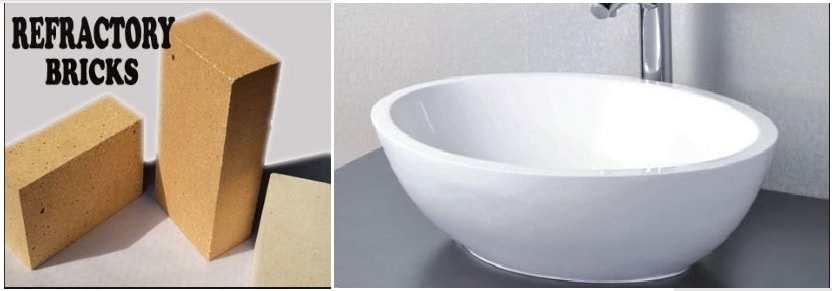Ceramic Engineering Assignment Help
A ceramic is a solid material comprising an inorganic compound of metal, non-metal or metalloid atoms primarily held in ionic and covalent bonds. Common examples are earthenware, porcelain, and brick.
Ceramic materials are brittle, hard, strong in compression, and weak in shearing and tension. They withstand chemical erosion that occurs in other materials subjected to acidic or caustic environments. Ceramics generally can withstand very high temperatures, ranging from 1,000 °C to 1,600 °C.
Glass is often not considered a ceramic because of its amorphous(noncrystalline) character. However, glassmaking involves several steps of the ceramic process, and its mechanical properties are similar to ceramic materials.
Traditional ceramic raw materials include clay minerals such as kaolinite, whereas more recent materials include aluminium oxide, more commonly known as alumina.
Modern ceramic materials, which are classified as advanced ceramics, include silicon carbide and tungsten carbide.
Advanced ceramics are also used in the medicine, electrical, electronics industries and body armor.
Mechanical properties-
Ceramic materials are usually ionic or covalent bonded materials, and can be crystalline or amorphous.These materials do show plastic deformation.These materials tend to be porous thus decreasing the toughness further, and reducing the tensile strength.
Electrical properties-
Some ceramics are semiconductors. Most of these are transition metal oxides . Semiconducting ceramics are also employed as gas sensors. When various gases are passed over a polycrystalline ceramic, its electrical resistance changes. With tuning to the possible gas mixtures, very inexpensive devices can be produced. Some ceramics exhibit high-temperature superconductivity.
Ceramic Engineering Assignment Help By Online Tutoring and Guide Sessions at AssignmentHelp.Net
Products of Ceramics-
- Structural- bricks, pipes, floor and roof tiles
- Refractories- such as kiln linings, gas fire radiants, steel and glass making crucibles
- Whitewares- tableware, cookware, wall tiles, pottery products and sanitary ware.
- Technical-missile nose cones,nuclear fuel uranium oxide pellets.
Classification-
Ceramics can also be classified into three distinct material categories:
- Oxides: alumina, beryllia, ceria, zirconia
- Non-oxides: carbide, boride, nitride, silicide
- Composite materials: combinations of oxides and non-oxides.

Topics related Ceramic Engineering
- Ceramic Raw Materials
- Thermodynamic and Phase Equilibria in Ceramic System
- Particle Mechanics and Fluid Flow Process
- Heat and Mass Transfer
- Structure and Properties of Ceramic Materials
- Ceramic Phase Diagram and Phase Transformations
- Glass and Glass Ceramics
- Refractories
- Advanced Ceramics
- Techniques for material characterisation.
- Process Calculations
- Ceramic Whitewares
- Glass and Glass Ceramics


